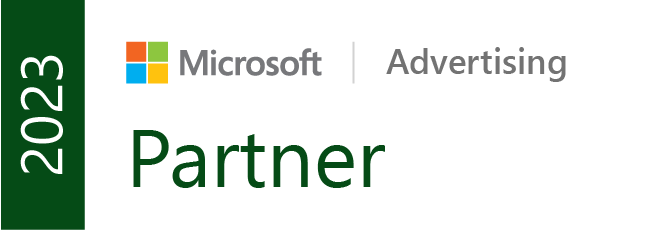
Got milk. The man in the Hathaway shirt. You deserve a break today. Just do it.
EVERYONE remembers these campaigns, right? Well, that’s not a coincidence. Think about it.
Campaigns like “Just do it” or “Got milk?” weren’t just slogans; they were the lifeblood of iconic brands.
And this was all down to the Big Idea, the core concept that anchors an entire advertising campaign, guiding its messaging and strategic direction.
In his 1972 article “How to create advertising that sells,” advertising legend David Ogilvy said: “Unless your advertising is built on a big idea, it will pass like a ship in the night.”
A mantra he embodied, transforming the global advertising industry. But more on that later.
Want to learn how to transform your ad concepts into memorable campaigns that resonate and convert?
Book a free YouTube ad brainstorming session with us here: 👇
In today’s world, the Big Idea is more vital than ever. It’s the secret sauce to transform good copy into unforgettable. So, fellow word wizards, as we follow in Ogilvy’s footsteps, let’s appreciate the power of the Big Idea and how mastering it can transform our craft.
The Ogilvy influence: Mastering the art of the Big Idea
David Ogilvy was the mastermind behind some of history’s most unforgettable ad campaigns. With his brilliant wit and meticulous eye, Ogilvy transformed mundane products into household names.
Take Hathaway shirts. Ogilvy took this little-known men’s shirt brand and turned it into an icon. His Big Idea? Create an air of intrigue and sophistication by featuring a dignified, eyepatch-wearing aristocrat in the ads. This clever narrative made Hathaway shirts synonymous with class and style.
Or consider Schweppes tonic water. Ogilvy aimed to link Schweppes with prestige through glossy photography and charming copy, playing up its origins in “1783 Geneva.” Sipping Schweppes suddenly felt like an elite, sophisticated experience. This campaign made the brand a fixture in upscale bars and restaurants across the U.S.
But it wasn’t slick ads alone that made Ogilvy a legend…
Ogilvy also graced us with advertising bibles like his seminal book “On Advertising.” This comprehensive guide shares Ogilvy’s doctrines for crafting compelling, persuasive advetising campaigns.
In “On Advertising,” Ogilvy stresses meticulous research to uncover consumer insights. He urges copywriters to get inside the minds of the target audience. What do they aspire to? What’s missing from their lives? This deep understanding provides fertile soil for growing a powerful Big Idea.
Ogilvy also emphasizes starting with the consumer benefit and then building your campaign around it. As he put it, “The more your advertising describes the benefits of your product, the more persuasive it will be.” Keep language simple and benefit-focused.
Ogilvy believed creativity and sales effectiveness went hand-in-hand. He urged advertisers to spend significant time uncovering their Big Idea before rushing into execution. As he put it: “I am scornful of artificially created advertising ‘themes’ which are neither related to the product nor permanently sustainable. I much prefer a Big Idea.”
He encourages us to use vivid humanized imagery and characters. Add doses of personality and humor when appropriate.
Key takeaways from "On Advertising":
🧑💻 Rigorous research unlocks consumer insights for Big Ideas
🫶 Lead with emotional and social benefits, not product features
✍️ Craft compelling narratives that entertain and persuade
Actionable steps:
- Immerse yourself in qualitative and quantitative research about your audience. Look for needs and desires.
- Map out the core consumer benefit before crafting your campaign. Build all messaging around it.
- Tell a charming brand story with a humanized central character or storyline. Spark consumer interest.
- Test different creative approaches to optimize persuasiveness and relevance. Ogilvy was a stickler for testing.
- Analyze competitors for points of differentiation. How can you separate your brand in the consumer’s mind?
Ogilvy said, “You must study your consumer, get inside their mind, and never take your eyes off them.”
👉 Follow his blueprint and let rigorous consumer focus guide your path to Brilliant Big Ideas.
Unleashing creativity with James Webb Young's technique
Curious about crafting the Big Idea in advertising but unsure where to start? James Webb Young’s “A Technique for Producing Ideas” is your roadmap. Young outlines a five-step process for idea generation, transforming a blend of specific and general knowledge into standout advertising ideas. This book isn’t just a read; it’s a guide to unlocking creative genius. Let’s unpack its core concepts.
Gather raw material: Immerse yourself in a diverse range of information related to and beyond your project.
Digest the information: Reflect on what you’ve gathered, seeking out connections.
Incubation period: Step back and let these ideas simmer subconsciously.
The birth of an idea: Be ready for that ‘Eureka’ moment, often when least expected.
Shaping the idea: Fine-tune this raw idea into something practical and impactful.
Key takeaways:
- Broaden Your Horizons: A wide knowledge base can lead to unique, compelling ideas.
- Think, Then Don’t: Let ideas percolate in the back of your mind.
- Expect the Unexpected: Great ideas often come at surprising times.
- Polish Your Thoughts: Refine your initial idea into a polished gem.
Application in advertising:
Young’s method isn’t just theory; it’s a practical toolkit. For advertisers and copywriters, it means looking beyond the surface and crafting messages that resonate and endure.
- Research Far and Wide: Understand everything from product details to cultural trends.
- Freeform Brainstorming: No limits – the wilder, the better.
- Embrace Breaks: Let your ideas breathe.
- Always Be Ready to Jot Down Ideas: Keep a notepad or digital tool handy.
- Feedback and Refinement: Collaborate, listen, and evolve your concept.
At Inceptly, we LOVE James Webb Young’s approach. It’s the perfect blend of discipline and imagination. Adopt these steps, and you’re not just reading about the Big Idea – you’re creating it. This is more than a technique; it’s a pathway to revolutionize your approach in the dynamic advertising landscape.
Iconic campaigns: Anatomy of a Big Idea
1) The one-eyed man who launched a thousand shirts: Dissecting a Big Idea masterpiece
The “Man in the Hathaway Shirt” didn’t just help sell shirts – he launched an icon.
When David Ogilvy crafted this campaign in the 1950s, he could’ve simply showcased shirts. Instead, he gave us a mystery. Intrigue. A distinguished gentleman is sporting an eye patch. No explanation is needed.
The Unlikely client.
In 1951, Ellerton Jetter approached David Ogilvy.
He was an unknown, a small business with a small budget of 30k (300k today).
But what he could offer was complete creative license/freedom.
An offer Ogilvy couldn’t refuse.
He went on to create his most famous campaign… And Ellerton company MILLIONS.
Let’s break it down.
This iconic spur-of-the-moment dollar fifty-eye patch proved to be the master stroke.
Why is he wearing a patch? What happened to his eye? Who is he?
He was unforgettable.
The $1.50 Eyepatch: This inexpensive, spur-of-the-moment addition proved to be a masterstroke, demonstrating the power of simplicity.
“The man in the Hathway shirt”
What a headline. Simple, but boy, is it effective.
First, it mentions the brand name, key if you want to make a business famous as John Caples says.
It also highlights the mystery man wearing the shirt. BUT says nothing else about him.
And then BANG, you’re hit with social proof and an overwhelming feeling of FOMO:
“AMERICAN MEN are beginning to realize that it is ridiculous to buy good suits and then spoil the effect by wearing an ordinary, mass-produced shirt. Hence the growing popularity of HATHAWAY shirts, which are in a class by themselves.”
Then, they go on to list benefits, which are also tied to the opening sentence.
The copy goes on to describe how the shirts are made from exquisite materials from the four corners od the world – giving it a luxury, desirable, and exclusive feel.
This is further backed up in the fourth paragraph, which states:
“HATHAWAY shirts are made by a small company of dedicated craftsmen in the little town of Waterville, Maine. They have been at it, man and boy, for one hundred and fifteen years.”
This adds to the feeling of exclusivity, high class, and boutique… it all adds to the allure and mystique of the shirt… And the man in the patch is wearing it!
Finishing off with a powerful CTA that says you can find the shirts at “better stores everywhere” again, the final sign-off tying the whole luxury boys club must-have shirt perfectly.
It’s no wonder Hathaway sold out their entire stick of shirts a week after this ad was run.
- Be brave with your creatives
- Use images to tell a story
- Trust your instincts
- Use research
For today’s advertisers, the lessons are clear:
- Find your “eye patch” – that one distinctive element to define your brand’s story.
- Keep messaging minimalist. Let the iconic image do the heavy lifting.
- Weave in an air of mystery and allure. Make people lean in closer to engage.
- Maintain consistency across channels to reinforce the identity. Don’t dilute it.
- Be brave with your creatives – Ogilvy took a risk with the unconventional eyepatch image that became iconic.
- Use images to tell a story – The eyepatch sparked intrigue and created a memorable visual story around the Hathaway man.
- Trust your instincts – Ogilvy followed his hunch to add the eyepatch last minute, even though it had been discarded during brainstorming.
- Use research – Ogilvy drew inspiration from studies showing images with “story appeal” grab attention, informing his creative approach.
The Hathaway campaign exemplifies advertising alchemy – transforming the ordinary into the extraordinary through the power of a Big Idea. Something truly memorable emerges when simplicity, storytelling, and mystery intersect.
2) "Got Milk?" - An Advertising Era Defined by a Simple Question
With one straightforward question, the California Milk Processor Board launched an advertising era.
“Got Milk?”
That’s all it took. Three words that catapulted milk into a cultural icon in the 1990s.
The “Got Milk?” campaign was launched in 1993 when milk consumption was steadily declining. California milk farmers hired ad agency Goodby Silverstein & Partners to revitalize milk’s image and boost sales.
The memorable ads highlighted relatable moments of frustration when milk wasn’t available. This “deprivation strategy” tapped into consumers’ emotions and everyday experiences.
Within a year, the witty “Got Milk?” campaign had increased California milk sales by 7%. The simple yet unforgettable tagline penetrated pop culture.
Remarkably, the campaign continues today, over 25 years after its launch.
Despite being over twenty years old, the ads still appear in numerous print magazines featuring some of the most renowned celebrities.
It boosted California milk sales by 76 million gallons in its first three years. “Got Milk?” print ads featuring celebrities with milk mustaches graced magazines for over 20 years.
Why was it so successful?
Well, without the staying power came from consistency across media as “Got Milk?” invaded pop culture. The ads featured over 100 celebrities, while the slogan spread across billboards, magazines, and music videos. “Got Milk?” defined an era.
The tagline was catchy, meaningful, and easy to incorporate into daily conversations. This extended the campaign’s impact.
The ads evoked nostalgia and memories associated with milk to build an emotional connection.
The campaign created a perception of scarcity and exclusivity around milk. Psychological research shows this heightens desire.
The approach felt fresh compared to traditional nutrition-focused milk advertising. It met the moment and resonated more.
“Got Milk?” transformed a commodity product into an iconic cultural symbol by reminding people how much they love milk. Its breakthrough marketing strategy halted the decline in milk consumption and changed advertising.
How can you do the same?
🥛 Manufacture scarcity
The campaign made milk seem more scarce and exclusive compared to abundant sodas. Direct marketers can highlight limited availability or impending deadlines to spur urgency. Conveying scarcity taps into psychological responses that drive action.
🥛Anchor with memorability
“Got Milk?” created an unforgettable phrase that penetrated culture. Direct marketers should craft succinct, catchy taglines that stick in minds. Short, impactful messaging ensures brand and offering awareness.
🥛Activate emotive connections
The ads evoked nostalgic connections to milk and food experiences. Direct marketers can trigger similar positive emotions through visual storytelling related to their product/service benefits. Making an emotional connection builds relationships and brand loyalty.
UP NEXT…we’ll explore an ICONIC direct response ad that took a unique approach and drove huge results.
3) Dollar Shave Club: Swearing all the way to the bank
In an oversaturated market, Dollar Shave Club broke through the noise with an f-bomb-laced viral video.
“Our blades are f***ing great.”
This provocative tagline anchored Dollar Shave Club’s 2012 launch video, which has been viewed over 28 million times.
The video opens with Dollar Shave Club founder Michael Dubin asking, “Do you think your razor needs a vibrating handle, a flashlight, a back-scratcher, and ten blades?”
With this quip, Dubin calls out the nonsense of bloated razor technology and pricing. Instead, he offers convenient delivery of quality blades to your door for just a few bucks.
What made it stand out? Authenticity and wit.
Dubin delivers the sales pitch directly to the camera in an unpolished style. His improv chops shine through engaging viewers with colorful language.
DSC’s freshman ad lacked flashy production polish. It didn’t need it. The humorous, irreverent tone aligned perfectly with the disruptive business model. It feels more like a subversive friend than a polished corporate ad.
The creative risk paid off – with 10+ million YouTube views and 12,000 new subscribers overnight. Revenue shot up as word spread. Five years later, Unilever acquired DSC for $1 billion.
As Dubin put it, “You don’t need a flash; you just need a solid idea and clear communication.”
Dollar Shave Club demonstrates how personality, humor, and an authentic approach can drive growth. Even without a flashy production budget, smart messaging and creativity wins.
Key takeaways:
🪒 Align tone with positioning – irreverent for a disruptor
🪒 Wit and humor enhance appeal when authentic
🪒 Personality amplifies straightforward offers
🪒 Big Ideas can thrive on modest budgets
Blending storytelling and salesmanship: How to craft compelling direct response campaigns
Direct response advertising is fueled by action. Urging the prospect to pick up the phone, click the link, and make the purchase. This hard sell works when done right. But as we’ve explored, today’s consumers desire more than transactions. They crave connection. Is it possible to blend compelling storytelling with laser-focused direct response?
The answer is a resounding yes.
The key is learning the art of fusing the Big Idea with precision salesmanship. We must uncover what makes our brand truly unique and meaningful. Extract these golden nuggets and transform them into narratives that spark emotion in our audience. Stories they can’t help but engage with.
Then, with scalpel-like accuracy, we guide consumers down the seamless path to conversion. The story captivates their hearts, while the call to action prompts their hand.
Direct response campaigns thrive on clarity and simplicity. So, distill your Big Idea into straightforward messages and memorable hooks that clearly articulate your offer’s value.
Keep honing through rigorous testing and refinement based on hard data. Monitor the customer journey obsessively, removing any friction points on the path to purchase.
When done skillfully, these narrative-driven ads not only convert in the moment but endure in the mind. Direct response alchemy is transforming one-time transactions into lifelong brand affinity.
So, fellow marketing nerds, don’t shy away from infusing your heart into your direct response efforts. Leverage data aggressively but also embrace creativity. Build campaigns powered by substance yet brought to life through storytelling. This is how legends are forged.👊
Our journey through advertising history reveals a key truth – compelling storytelling and strategic messaging are timeless. Generations ago, Ogilvy ushered in the era of the Big Idea, but his principles still ring true. Savvy marketing requires creativity with precision. Data without soul may inform but not inspire action. As we’ve seen, campaigns that resonate most contain equal parts rigor and heart.
So apply these lessons and craft your own iconic tales. Let creativity be your compass, and may your Big Ideas lead to legendary success.
Want more content like this?
Don’t miss out on the latest news and updates from the world of Direct Response advertising! Subscribe to our newsletter today 👇

Holly Preston, Lead Copywriter
Holly is behind most of Inceptly's successful creatives, supporting the team with her experience and imagination, making her an invaluable asset to Inceptly.
Want to brainstorm with our team on new ways to scale your business with YouTube Ads (and other performance video platforms)?
Join us for a free YouTube ad brainstorming session:
Like this post? Let's continue the conversation!
Get in touch with us by shooting us a quick email or tagging us on LinkedIn or Instagram, and sharing your thoughts. Your feedback helps us keep our blog relevant and interesting.
Get Our Newsletter
Need Help?
Get in touch with us for an insightful evaluation of your ads + actionable tips to help amp up your direct response revenue








